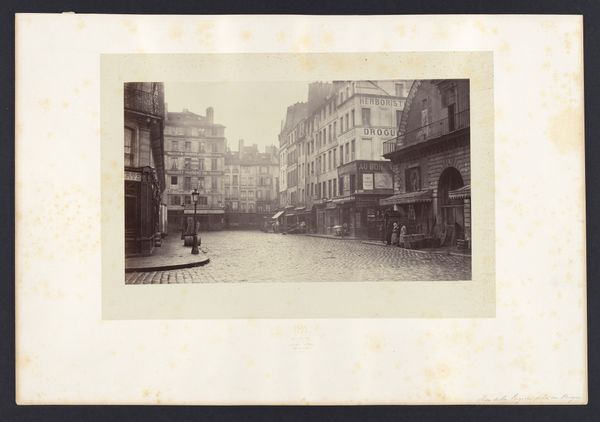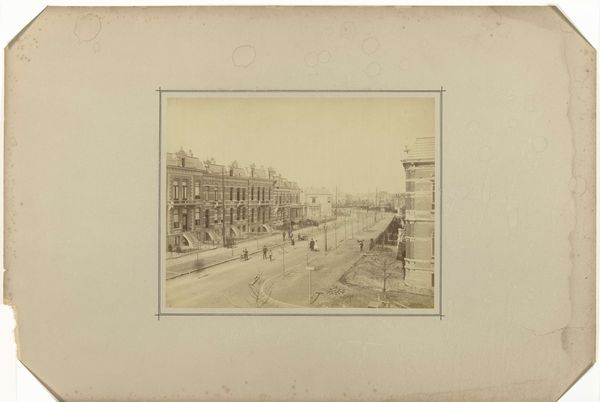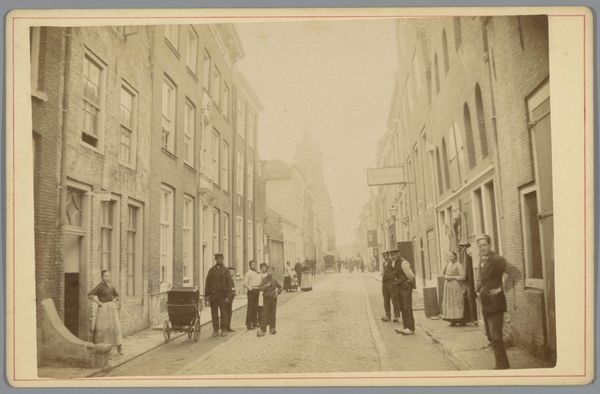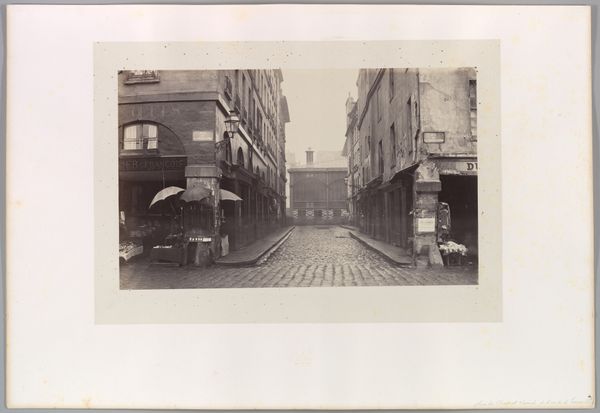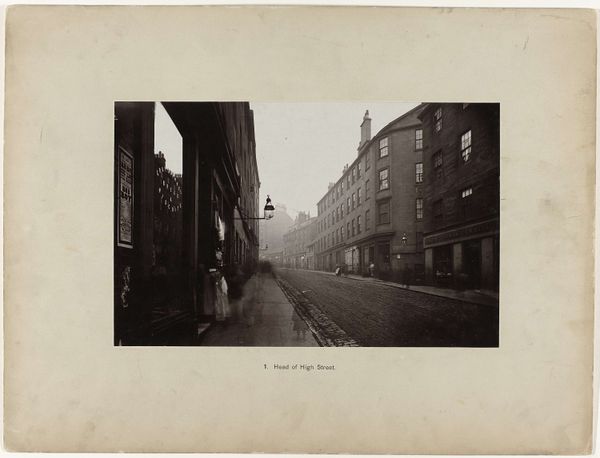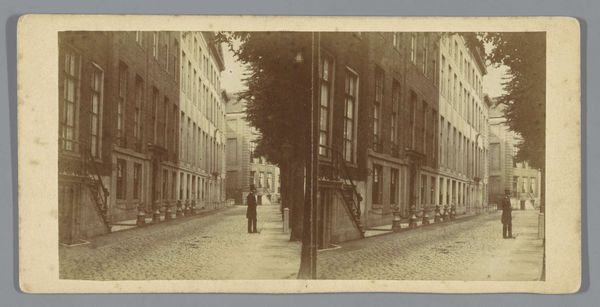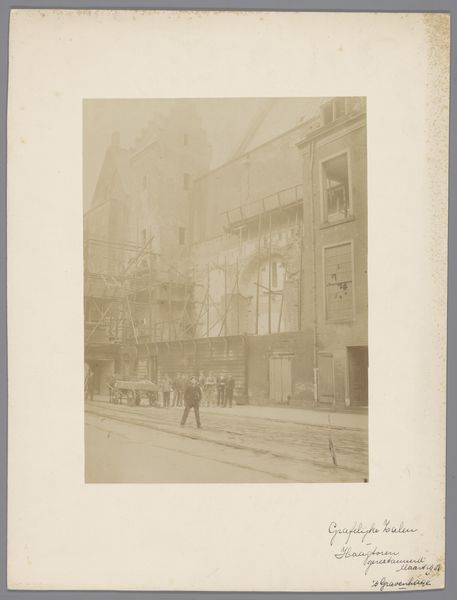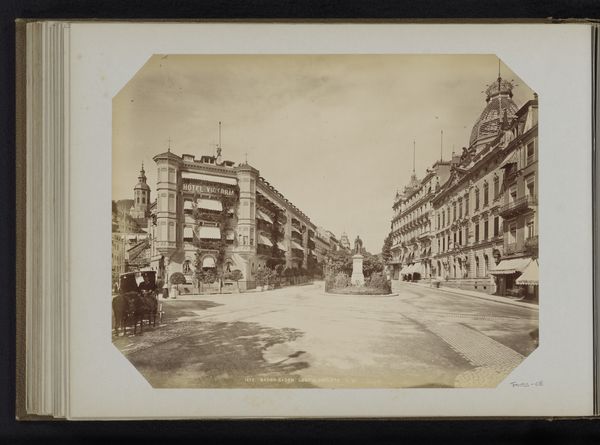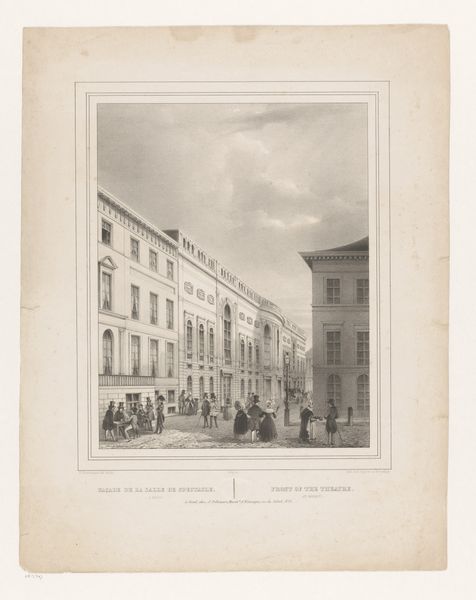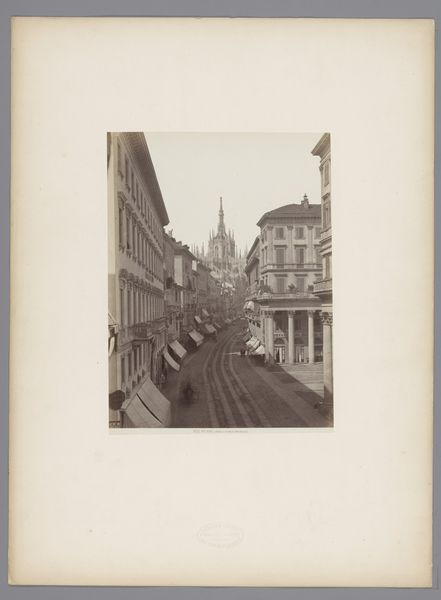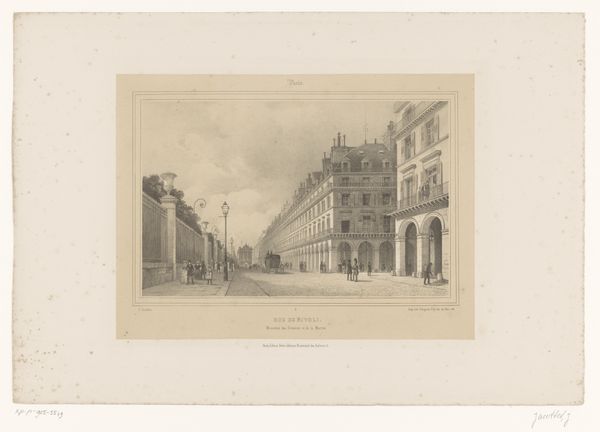
Burchtstraat in Nijmegen, met links het stadhuis en de Grote Markt en de St.-Stevenskerk op de achtergrond c. 1885 - 1890
0:00
0:00
photography, gelatin-silver-print
#
muted colour palette
#
old engraving style
#
etching
#
street-photography
#
photography
#
gelatin-silver-print
#
cityscape
#
realism
Dimensions: height 210 mm, width 275 mm
Copyright: Rijks Museum: Open Domain
Editor: This gelatin silver print, "Burchtstraat in Nijmegen," taken by Wilhelm Ivens around 1885-1890, depicts a street scene. The sepia tones and the rather formal composition give it a somber feel. What's your interpretation of this work? Curator: I see this image as more than just a cityscape. Consider the period. The late 19th century was a time of immense social and political change, and photography, though nascent, played a role in documenting, and even shaping, those changes. The rigid composition, the almost theatrical framing of the St. Stevenskerk in the distance, hints at the power structures at play within the city. Who had access to be seen, to be documented? Look at the figures, they're intentionally anonymous. Who is included and who is conspicuously missing? Editor: So, you’re saying the seemingly straightforward depiction of a street implies a commentary on social dynamics? Curator: Precisely! Photography, even in its realist mode, is never truly neutral. It’s a curated reality. Ivens, through his choices of perspective, lighting, and the very act of capturing this particular scene, makes a statement. Are the muted tones symbolic? Think about the male gaze, class structure. The buildings dwarf the people; do you see a symbolic element here? Editor: I didn't consider it that way, but now I do see that imbalance, the way individuals are rendered almost insignificant. I appreciate your insight into how the image reflects power dynamics of that era. Curator: And thinking about it through the lens of today, what conversations does it start regarding the photographic lens of our cities, or representation? Editor: This has made me reconsider how photography documents more than just visual reality and how social dynamics come into play in visual arts.
Comments
No comments
Be the first to comment and join the conversation on the ultimate creative platform.
